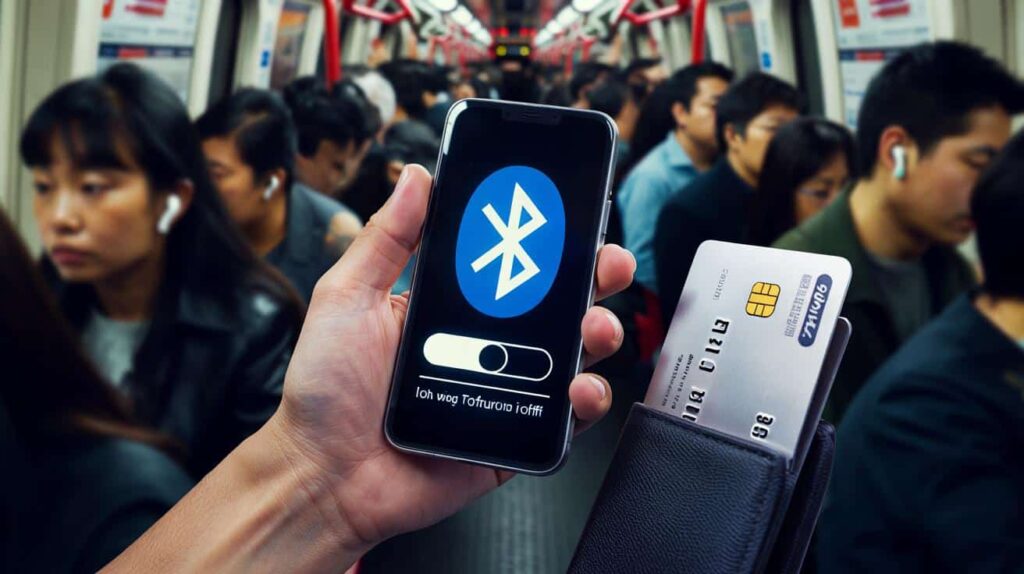This convenience conceals a subtle risk that thieves are now taking advantage of in crowded environments.
For several months, security teams and consumer organizations have observed a rise in Bluetooth-related theft. Criminals no longer require your PIN to begin their intrusion. They search for nearby phones with improper settings, then infiltrate to steal personal information and access your finances.
Bluesnarfing has returned and it flourishes due to a small switch
Bluesnarfing is a method that exploits Bluetooth connections to access data on your device. It requires close proximity. It thrives in busy areas. And it targets phones that have Bluetooth enabled, are visible, or have outdated software.
Once in range, attackers look for misconfigurations and unpatched vulnerabilities. If they gain access, they can view contacts and messages, collect files, or capture one-time codes. This information becomes a master key for bank logins, email resets, and cryptocurrency wallets.
Disable Bluetooth when you are not using it. Keep your device non‑discoverable. Update your phone and applications.
How attackers gain access
Criminals depend on a few predictable vulnerabilities. Some phones broadcast their names to everyone nearby. Many users leave “device visibility” enabled by default. Outdated software contains known vulnerabilities that specialized tools can exploit. Some applications have more Bluetooth permissions than necessary.
Attackers combine this with social engineering tactics. A fake pairing request might imitate the name of your earbuds. A malicious file-sharing prompt can appear as a standard pop-up. A single tap, and the door swings open wider.
Where you are most vulnerable
- Stations, airports, concerts, and stadiums where devices gather
- Cafés, co‑working spaces, and hotel lobbies with extended stay times
- Public transport during peak hours when you hold your phone unlocked
- Conference halls with dense, noisy radio environments
Quick settings that block most attempts
These steps take just a few minutes and close off the easiest routes into your phone. The exact wording may differ by model, but the actions remain consistent.
| Task | Android | iPhone |
|---|---|---|
| Turn Bluetooth completely off when not in use | Settings > Connected devices > Connection preferences > Bluetooth > Off, or use the Quick Settings tile | Settings > Bluetooth > Off (note: Control Center only disconnects temporarily) |
| Make device non‑discoverable | Bluetooth settings > disable Device visibility/Nearby visibility; set Nearby Share to “No one” | Avoid keeping the Bluetooth settings screen open in public; iPhone is discoverable primarily while that screen is active |
| Restrict app Bluetooth access | Settings > Privacy > Permission manager > Nearby devices/Bluetooth > review and revoke | Settings > Privacy & Security > Bluetooth > toggle off for apps that do not require it |
| Disable background scanning | Settings > Location > Location services > Bluetooth scanning > Off | Settings > Privacy & Security > Location Services > System Services > Networking & Wireless: consider turning off when traveling |
| Restrict sharing features | Settings > Google > Devices & sharing > Nearby Share > set to “No one” | Settings > General > AirDrop > Receiving Off or Contacts Only; toggle NameDrop off if available |
| Change your device name | Bluetooth settings > Device name: remove your real name | Settings > General > About > Name: use a neutral label |
If you only tap the Bluetooth icon in Control Center, iPhone keeps Bluetooth services active. Use Settings to turn it completely off.
Warning signs that your Bluetooth is being targeted
- Unexpected pairing requests, especially with names resembling your earbuds or car
- Random file transfer requests from “Unknown” devices
- New devices appearing under Paired/Previously connected that you do not recognize
- Bluetooth turning itself back on after you have disabled it
- Battery drain and heat while idle, with Bluetooth running in the background
Financial risks: how a Bluetooth breach can lead to drained accounts
Bluetooth by itself does not transfer money. It opens a door. If attackers access your text messages and email access tokens, they can reset passwords and intercept verification codes. If they obtain images of ID documents, they can attempt account recovery. If they monitor notifications on a less-secure companion app, they can stall you while they drain linked services.
This is why prevention is crucial. Short Bluetooth sessions for headphones are acceptable. However, leaving it on, visible, and unpatched around strangers poses a risk.
Reduce your attack surface: update quickly, pair at home, unpair unused devices, and keep Bluetooth off by default.
What to do if you suspect you were targeted
- Immediately turn off Bluetooth and restart your phone
- Remove unknown paired devices; re‑pair trusted accessories later
- Conduct a mobile security scan; uninstall apps you do not recognize
- Change email, bank, and cloud passwords from a separate, secure device
- Check SMS and email for password resets you did not initiate
- Enable stronger 2FA methods (hardware key or app codes, avoiding SMS where possible)
- Contact your bank and set alerts for transactions and new payees
- Back up and factory-reset if suspicious activity continues
For families: establish rules for children’s phones
Children are getting smartphones at an early age, and they enjoy wireless headphones and speakers. Teach them not to accept random pairing requests. Show them how to disable Bluetooth outside the home. Use parental controls to restrict app permissions. Ensure device names are anonymous.
A brief guide to similar threats
Bluesnarfing vs. bluebugging vs. bluejacking
- Bluesnarfing: covertly retrieving data from a device without consent
- Bluebugging: taking control of phone functions through a deeper Bluetooth vulnerability
- Bluejacking: sending unsolicited messages; mostly a nuisance, but can be used to entice taps
Modern smartphones mitigate these risks with improved defenses, yet misconfigured settings and slow updates create vulnerabilities. Public spaces amplify these vulnerabilities.
If you must keep Bluetooth enabled, strengthen everything around it
Many individuals rely on watches, hearing aids, or car systems. You can still reduce risk. Set a long device passcode and require it after 30 seconds. Lock your SIM with a PIN to prevent thieves from swapping it. Keep the firmware of your watch and earbuds updated. Disable “auto‑accept” features for file sharing. Pair new accessories at home, not while on the train.
One more practical habit to adopt while traveling is to use airplane mode when cellular or Bluetooth is not needed. Then selectively re-enable only what you require, like Wi-Fi for boarding passes. This keeps radios quiet and minimizes how often your phone announces its presence to those around you.








